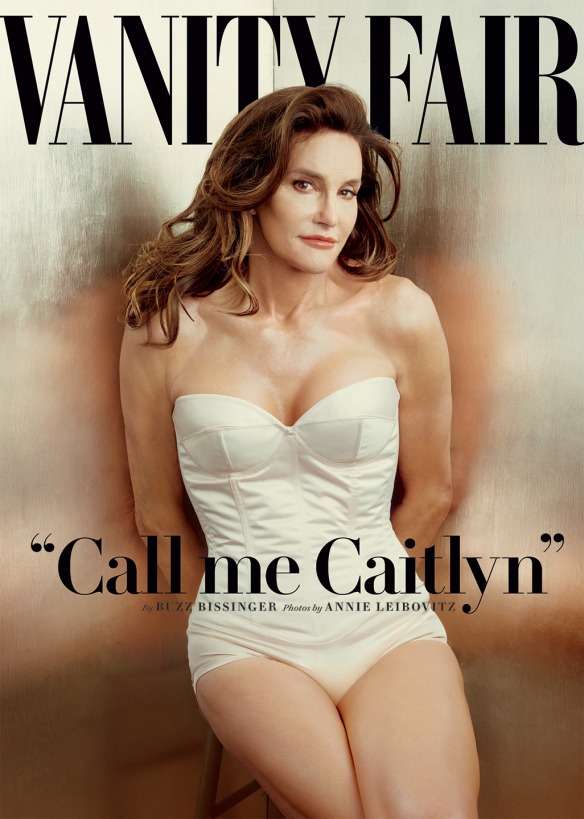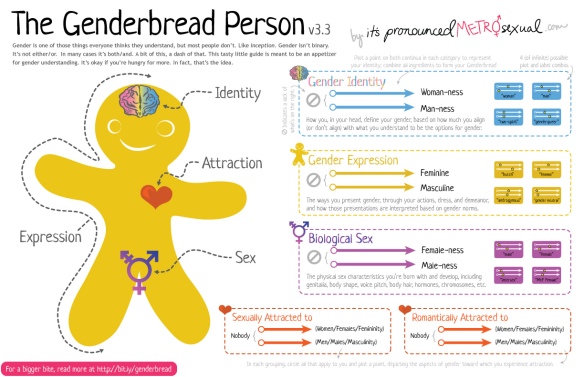NB – I am open to suggestions and making edits to this piece if anyone feels the language used is inappropriate or inaccurate. Please drop me a message and let me know. 
Here is an extract from a recent conversation I had:
“But the first Matrix is definitely the best Wachowski Brothers’ film”
“They’re actually not called the Wachowski Brothers anymore, as one of them has since transitioned”
“Ah okay, didn’t know that! Good pub quiz knowledge!”
And then the conversation moved on. Transgender people are arguably more visible now than ever before, and words and phrases such as “transition”, “non-binary”, “female-to-male” and “gender identity” are far more commonplace in general vocabulary and seem to not need the level of explanation that they once did. That isn’t to say that it’s fully entrenched in common knowledge, and many people still don’t know the difference between terms such as “transgender”, “transvestite” and “hermaphrodite” (and think “cis” is some kind of infection), (the BBC published a helpful glossary this week). Awareness is rising, and that’s never been more true than this week, with Caitlyn Jenner’s Vanity Fair cover, quickly becoming the most visible trans person in the world.
Transvisibility has certainly increased in the last couple of years. Openly trans actress and activist Laverne Cox rose to prominence in Orange is the New Black, later gracing the cover of Time magazine and posing nude for Allure. Trans models such as Lea T and Andeja Pejic have been very visible in fashion and beauty campaigns. Popular television shows such as Transparent and Louis Theroux’s “Transgender Kids” have been educational to audiences. Journalist and presenter Paris Lees, once voted top of the “pink list” of influential UK LGBT people, has brought a lot of attention to trans issues. Trans men continue to be less visible, although statistics suggest that they are similar in number.
Prior to this week I was only vaguely aware of Ms Jenner (I’ve never watched her reality shows) but lately my social media has been awash with images of her, celebrating her bravery, openness and the inspiration she gives. But you only need to read the comments posted on this article (or indeed from some celebrities) to see how far we have to go in terms to increasing awareness, acceptance and equality for the transgender and minority gender identity community.
Trans people experience significant discrimination and abuse. Many trans people, particularly women of colour, are murdered each year. They are rejected by their families, bullyied and the list of those who turn to suicide increases. The stories of Leelah Alcorn and Lucy Meadows are two recent tragic examples that have been publicised. Trans rights were largely ignored in the equal marriage debates, and the issue of “spousal veto” remains – in which a married person applying for a gender recognition certificate must have the approval of their spouse. The UK’s most prominent gay rights charity Stonewall has only recently begun to represent trans people, after lengthy lobbying. Transphobia is pervasive and often slips under the radar, as though seem as a fair topic for fun rather than an undercurrent of prejudice that impacts on the lives of trans people continually. Trans people are often the subject of jokes in the media and derogatory terms such as “tr*nny” are used without thought. If you look out for it you might be surprised the level of offensive language commonly used that refers negatively to trans communities, often slipping in subtly. Trans people are overrepresented in mental health populations, and with a lifetime of discrimination and high incidences of trauma it’s little wonder why. In order to access gender identity services people must jump through considerable hoops that include extensive psychiatric evaluation. The past hashtag #transdocfail exhibited just how uninformed health professionals are about trans issues. Any one of these instances is shocking, but together it’s a pretty horrifying picture of how we treat human beings we see as “different”.
Much of the negativity I’ve seen directed towards the trans community seems to take the form of people “just not getting” being trans. The argument seems to be that it isn’t natural, that a woman “is” a woman, regardless of how someone “feels”, that you can’t “change your mind” and “choose”. But do we need to “understand” what it’s like to be trans to offer our support? Does it matter if we understand or not? As a cis-gendered woman, I have few concerns about my gender identity. I do not know what it feels like to be in the “wrong” body, to feel that your own identity does not correspond with your biological sex, and to grow up with this and be misgendered, ignored and abused by the world around you. I’d count myself lucky that I haven’t had these experiences. So I can’t fully empathise with a trans person, their experiences are not my own. I do not know what I would feel like if I had been born male, if I would feel the same way about my gender and my body as I do now. I don’t know how I would feel about my body and identity if I lived in a different culture or time where ideas about what is “masculine” and “feminine” were different. I’ll never know these things. But it isn’t for me to doubt the reality of trans people just because I haven’t experienced it myself or fully understood it. Trans people have been around throughout history (though less visibility than now) and can be relied on to be experts of their own experience, they do not need to prove the authenticity.
Whether you understand and relate to it or not, someone else’s gender identity (or identity in any way) is private and their own. It really isn’t any of your concern. Even within our binary categories of “male” and “female” there is significant variation in how people experience their gender – think of dimensions of “girlyness”, tomboys, being “effeminate” or “macho” and everywhere in between, as well as people who present as androgynous. Trans people are often asked intrusive questions about their genitals, sex lives and backgrounds (see this great video). If trans people choose to share their stories and inform others then it’s generous, they’re not entitled to. It’s up to the rest of us to inform ourselves. This resource on Genderbread (though not perfect) is quite a simple starting point for getting your head around gender identity and it’s terms, as is material on the Trans Media Watch. We can’t hold trans people responsible for making us more informed.
As a cis person I try to be a trans ally. This is not just because I have friends who are trans or genderqueer, or because I’m a mental health professional. We can judge a society by how it treats minority groups and whilst increasing progress has been made for gay rights, the discrimination faced by trans people is staggering. I don’t try and speak for the community, they can do this themselves, but I can assist in raising awareness and not being complicit in prejudice. I don’t always get it right, sometimes I get people’s pronouns wrong or use incorrect terminology but I try to be gracious and non-defensive when corrected, and learn from this. I try to challenge transphobia, especially that which seems to come from ignorance rather than hatred, by helping others (such a colleagues) to look at their views and inform themselves. As a professional I try to ensure that we’re always thinking about how out service can meet the needs of people of all kinds of gender identity. If I see a survey or form that doesn’t leave any options to tick other than “male” and “female” I mention it. These aren’t huge things, but they’re not hard to do and they’re not nothing. The recent advances in positivity and visiblity of trans people remains on a backdrop of suffering and human rights abuses. This is not diminished just because a famous trans woman is on the cover of a magazine. This is another step in slow progress, but is hopefully another step towards a reduction in preventable trans deaths and wider opportunities for people at all places along the gender spectrum, a movement that all of us need to take part in.



